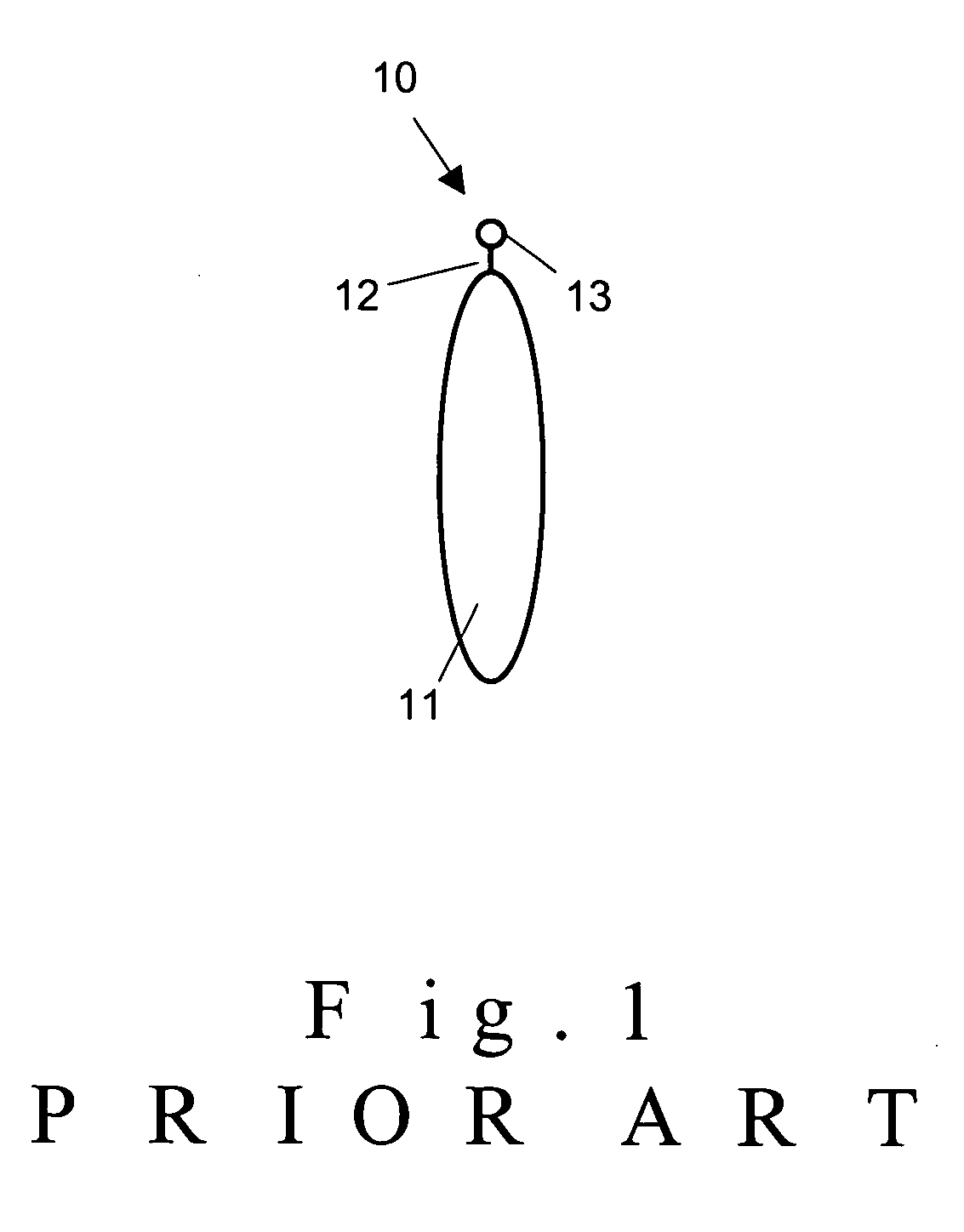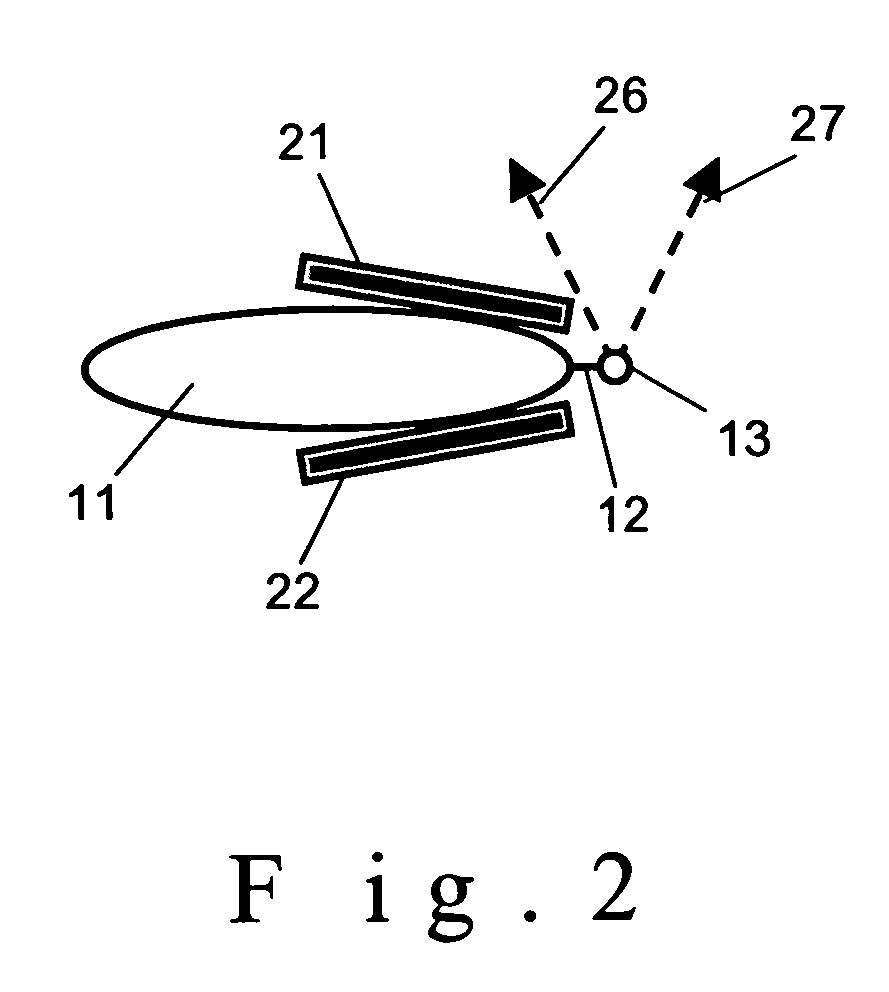Snag resistant line reversing device for fishing tackle
a technology of reversing device and fishing tackle, which is applied in the field of fishing tackle, can solve the problems of sinker costing money to replace, sinker becoming snagged in fishing areas, and undesirable abandonment of sinker
- Summary
- Abstract
- Description
- Claims
- Application Information
AI Technical Summary
Benefits of technology
Problems solved by technology
Method used
Image
Examples
Embodiment Construction
[0040] A prior art fishing sinker 10 is shown in FIG. 1. A weight 11 is rigidly attached to a clasp / link 13 by a filament 12. The clasp 13 may either attach directly to a fishing line, between the bait and the pole, or may attach to an intermediate device that enables attachment to the fishing line. The term clasp or attachable link should be read broadly as the connection to the fishing line, and indeed the fishing line itself. In can be as simple as a slidable knot or complex as a link element which itself attaches to the fishing line. Once cast into a fishing area, the prior art sinker 10 sinks and carries the bait below the surface of the water to a depth at which it may be seen by the fish.
[0041] As the fisherman artfully adjusts the positions of the pole / rod and the line, in order to entice fish to eat the bait, the prior art sinker 10 may become entangled in some structures on the bottom of the fishing area. For instance, it may become wedged between rocks, or snagged in pla...
PUM
 Login to View More
Login to View More Abstract
Description
Claims
Application Information
 Login to View More
Login to View More - R&D
- Intellectual Property
- Life Sciences
- Materials
- Tech Scout
- Unparalleled Data Quality
- Higher Quality Content
- 60% Fewer Hallucinations
Browse by: Latest US Patents, China's latest patents, Technical Efficacy Thesaurus, Application Domain, Technology Topic, Popular Technical Reports.
© 2025 PatSnap. All rights reserved.Legal|Privacy policy|Modern Slavery Act Transparency Statement|Sitemap|About US| Contact US: help@patsnap.com



